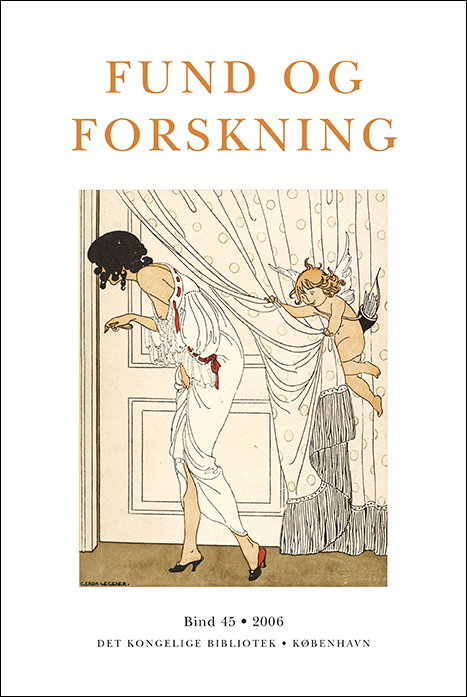En læges religion
DOI:
https://doi.org/10.7146/fof.v45i0.41183Abstract
Sir Thomas Browne (1605-82) is a well-known figure in English Literature. His most famous book is probably Urn Burial “seldom if ever equalled in English Prose.” Among his other works is the large Pseuudoxia Epidemica or Vulgar Errors, published in 1646, in which he discusses errors in the natural sciences, in history, and in the history of the Bible. At the order of King Frederic III a secretary in the Danish Chancellery, Gabriel Knudsen Akeleye, translated, with considerable difficulty, this book into Danish. The translation, which was never published, is still to be found in The Royal Library. Under the heading “A Danish work on Religion in general” yet another translation of (most of) one of Browne´s books, Religio Medici (A Doctor’s religion) has recently been discovered in The Royal Library. In this book, which is a kind of report on Browne´s views as a doctor and as a Christian, we read the famous sentence: “I perceive every mans owne reason is his best Oedipus.” Though Browne regarded himself as a Christian, his appeal to reason made him suspicious in the eyes of orthodox theologians, but conversely popular among contemporary critics of religion. Therefore Religio Medici is often mentioned in the so-called “clandestine” literature of the time. Browne was also involved in the famous witch-trial which took place in Suffolk in 1664. At this occasion he referred to a similar trial two years earlier in Køge.Downloads
Published
2014-05-15
How to Cite
Glebe-Møller, J. (2014). En læges religion. Fund Og Forskning, 45, 57. https://doi.org/10.7146/fof.v45i0.41183
Issue
Section
Articles


